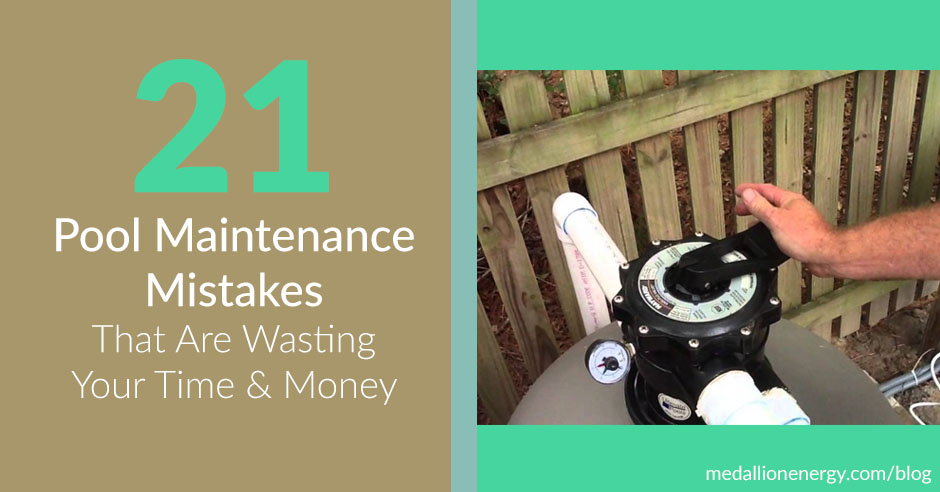As pool owners, we all make a few pool maintenance mistakes every now and then. Some of them have small consequences, and other cost us our time, money, and sanity to deal with.
What’s important is learning how to correct these mistakes. Which we’ll show you how to do.
But even more important that is knowing whether or not you’re making any of these mistakes. If you are, you’re creating a lot more work for yourself when it comes to taking care of your pool. And you’re also spending more on supplies than you need to.
So in this post, we go over the most common swimming pool maintenance mistakes, and how to correct them.
But if you just want a quick summary for now, we’ve got you covered.
21 Pool Maintenance Mistakes:
- Adding shock directly to your pool water
- Forgetting to brush
- Using the wrong kind of automatic pool cleaner
- Not testing pool water weekly
- Not running your filter pump long enough
- Ignoring calcium hardness
- Neglecting your pool’s Total Dissolved Solids level
- Adding chlorine or shock during the day
- Adding pool shock directly into the pool skimmer
- Not using the DIY skimmer sock hack
- Backwashing your filter too often
- Forgetting to adjust Total Alkalinity and pH
- Adjusting Total Alkalinity last
- Never sweeping the deck
- Leaving the pool uncovered when it’s not being used
- Not cleaning the filter enough
- Smelling chlorine and thinking the pool has too much of it
- Not servicing your pool heater or pump
- Forgetting to add winterizing chemicals when you close your pool
- Vacuuming incorrectly, or not at all
- Neglecting chemical maintenance when you run out of chemicals
21 Pool Maintenance Mistakes That Are Wasting Your Time & Money
1.) Adding shock directly to your pool water
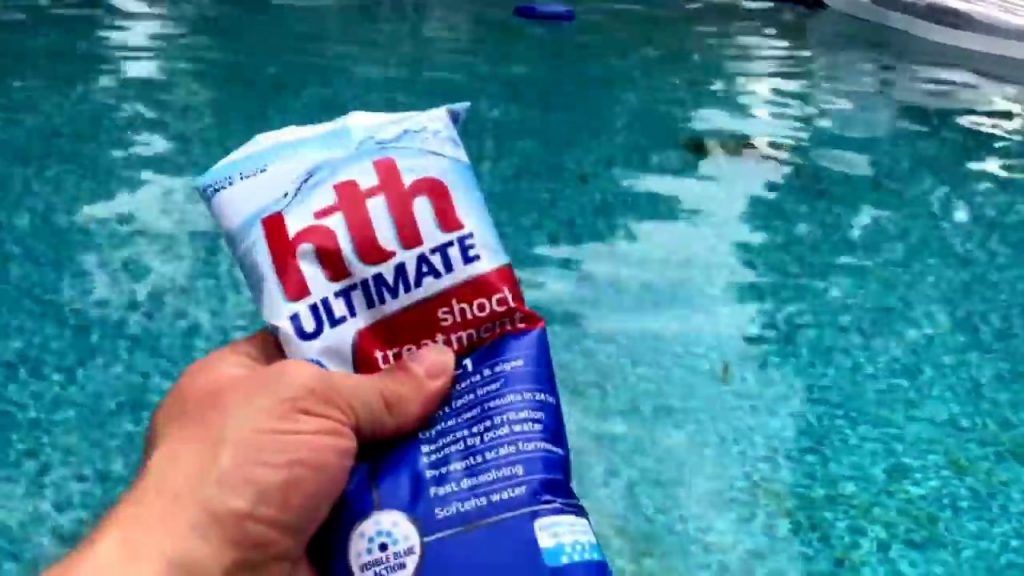


Adding shock directly to your water straight out of the package is the least effective way to shock your pool. Here’s why.
Since most pool shock comes in a powder/granule form, a lot of it sinks straight to the bottom of your pool when added directly.
When that happens, the shock doesn’t circulate properly into your water, making it far less effective. But worse, that shock sitting on the pool floor can also cause permanent staining – especially if you have a vinyl liner.
So how do you avoid wasting pool shock and staining your pool?
SOLUTION:
Pre-dissolve your pool shock into a 5-gallon bucket of warm water (pour shock into the water).
Dissolved pool shock circulates into your water much faster, and more evenly. And it also prevents staining, since the shock itself is mixed into a liquid form.
2.) Forgetting to brush
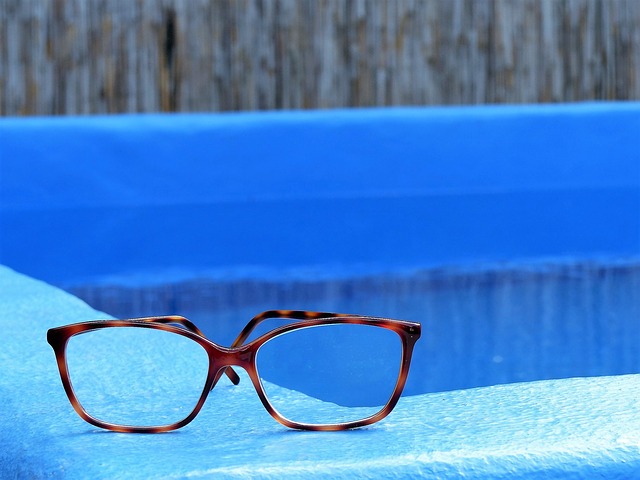


The consequences of not brushing your pool can range from harmless, to ruthless. It all depends on your cleaning habits.
But the important thing to remember is that the longer you go without doing it, the more buildup and contaminants latch on the walls of your pool. And the more contaminants in your water, the dirtier it gets, and the more chemicals you need to keep it clean.
Most pool owners won’t brush if their pool doesn’t look dirty. Which in theory, makes sense.
But with pools, it’s the little things that add up. Contaminants and algae spores can gather on your pool walls quickly, forming a thin, barely visible layer of buildup. So even if it doesn’t look dirty, it probably is – especially if it’s been more than few days.
If left to fester, the buildup on your walls throws off your pool chemistry, dirties the water, and eventually leads to a full on green pool. And again, the longer it goes, the worse it gets.
SOLUTION:
Brush your pool at least once each week to eliminate buildup for better filtration and clean.
It won’t take longer than 10 minutes, but it’ll save your HOURS of maintenance work. So don’t skip out on this simple, but effective part of pool maintenance.
When brushing your pool, don’t forget to scrub:
- Stairs
- Behind ladders
- Steps
- Corners
- Walls
3.) Using the wrong kind of automatic pool cleaner to fix a green pool
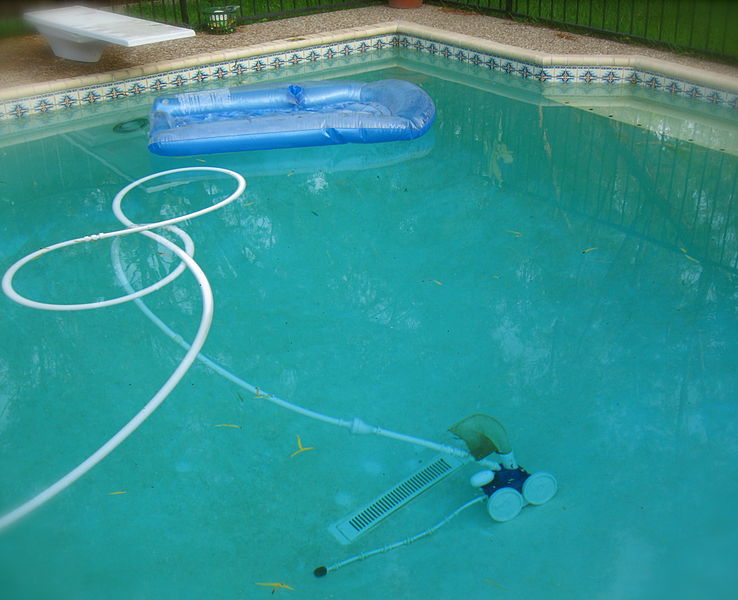


Yes, you can use an automatic pool cleaner to fix a green pool. But there’s a right one, and well, wrong ones for the job.
Pressure side cleaners travel across your pool, brushing the floor and walls while collecting debris in a self-contained mesh bag. Robotic cleaners work in a similar way.
In pretty much any other situation, they’re both excellent choices for automating pool cleaning.
But here’s the issue: if you’re using a pressure side cleaner, or robotic cleaner specifically to fix a green pool, don’t.
It’s literally the biggest waste of your time. And here’s why:
Those mesh bags that hold all the debris? Well, unfortunately, those mesh vacuum bags don’t hold algae well at all.
Pressure side and robotic cleaners will immediately re-release any algae collected, as it all flows straight through the mesh bag. Basically, it’s like trying to scoop water out of sinking boat while leaving all the holes unplugged. Don’t waste your time.
SOLUTION:
To fix a green pool, use a manual vacuum or suction side cleaner.
You can connect either of them directly to your skimmer, which leads to your filter. And when it comes to clearing out algae, your pool filter is way more effective than a mesh bag.
Note: If you’re dealing with a green pool, follow these steps to fix it
4.) Not testing pool water weekly
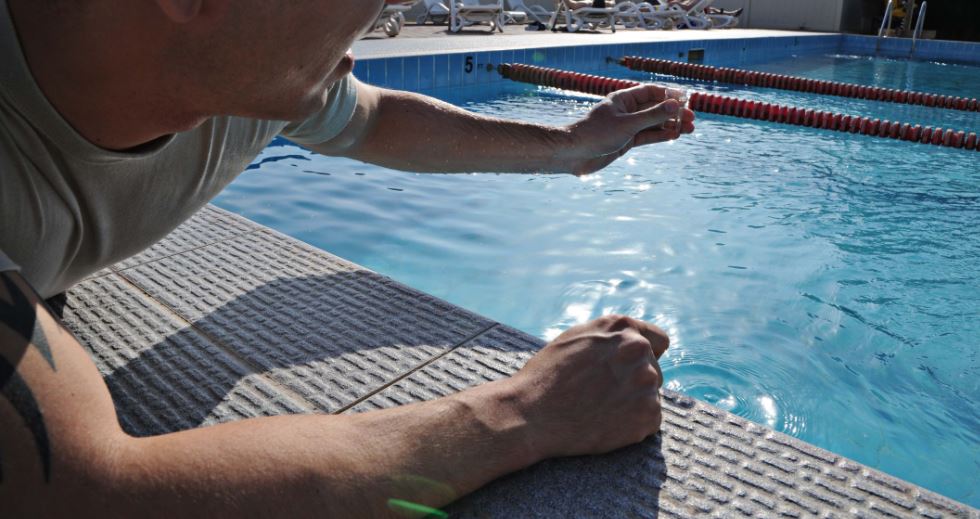


If you’re good at keeping your water balanced, then you might not think that regularly testing it is all that necessary.
And while you can somewhat “get away” with that, the consequences greatly outweigh the reward.
When you don’t test your water weekly, it gives your pH, Alkalinity, Calcium Hardness, and sanitizer levels more time to get farther out of balance. It also gives contaminants more time to enter your pool, and dirty it up.
How does that affect you as a pool owner?
Well, as soon as you go to test your water and add chemicals, you’ll notice that most of your levels are way off. And when that happens, you have to add a bunch of chemicals just to get everything back to normal – far more chemicals than you would have needed had you tested 7 days earlier.
So while the occasional pool water testing strategy may work in the short term, it only ends up costing you more in chemicals supplies in the long run. It’s also a surefire way to put more wear and stress on your equipment, as unbalanced water leads to corrosion and etching when left untreated.
SOLUTION:
Test your water at least once, if not 2-3 times a week. Using a test kit is most accurate, but test strips are okay in a pinch.
This helps to keep chemical adjustments small, so you’re not blowing through all of your chemical supplies in a few weeks. It also makes keeping your pool clean WAY easier, since making small adjustments once or twice a week takes way less time than fixing a cloudy green pool every month.
Related: Balance Your Swimming Pool Water in 7 Easy Steps
5.) Not running your filter pump long enough
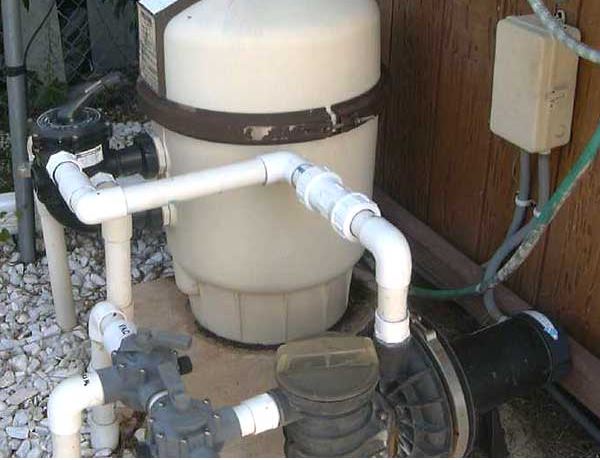


You would think that running your filter less would save you money. And in a very small sense, it does.
A few hours here, a few hours there. Less electricity, right?
Well, not exactly. In reality, not running your filter pump long enough often creates more problems than it solves. From poor water flow and weakly circulated chemicals to ineffective filtration and increased contaminants.
And all of that leads to spending more on supplies and having to run your filter double time for deep cleanings.
The bottom line, it just makes your pool get dirtier faster.
SOLUTION:
Run your pool filter at least 8 hours each day. This is enough time for most pools to complete 1-2 full cycles, which means all of the water in the pool passes through the filter.
By doing this, you help your filter do its job as effectively as possible. Which also makes your life a lot easier, by keeping your water circulated and healthy.
Pro Tip: To save on energy costs, run your filter at night during non-peak hours
Related: The Best Times To Run Your Swimming Pool Pump
6.) Ignoring calcium hardness
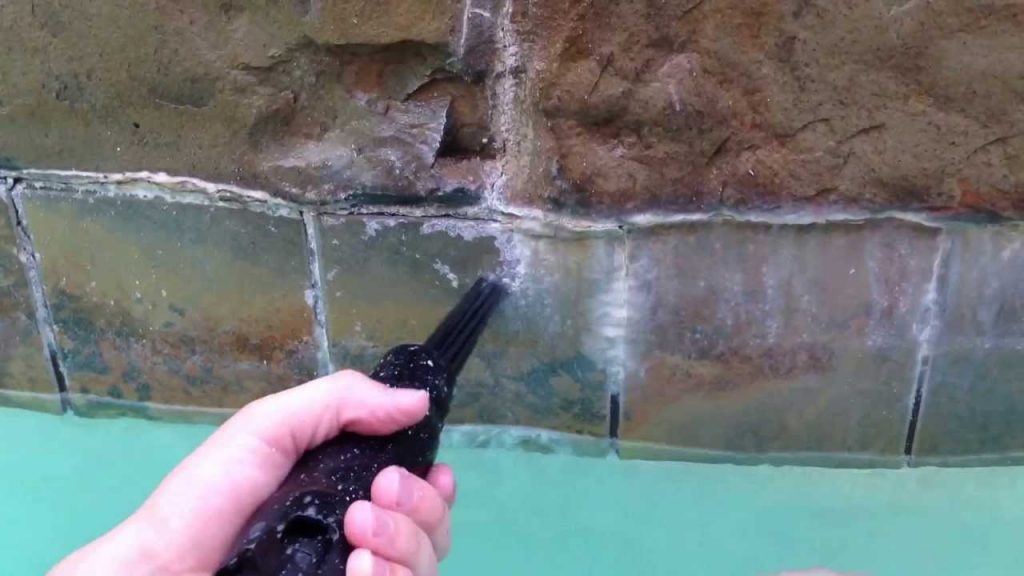


Calcium hardness is what controls how “soft” or “hard” your water feels to the touch. It also affects water clarity.
But what’s important to remember here is that it needs to be checked.
It’s easy to forget about your pool’s Calcium Hardness levels. It’s just not as big a priority as keeping your pool chlorinated.
Forgetting to add chlorine for a week has a quick, and noticeable effect on your pool’s cleanliness. But forgetting to check/adjust calcium hardness for even two weeks doesn’t have as big of an impact.
That’s because calcium hardness is something that changes gradually. But when it finally does get too high (or low), it can cause a lot of damage.
High calcium hardness leads to calcium buildup, which dirties your pool, and clogs your pipes and equipment with scaling.
Low calcium hardness levels cause etching, which is when your water begins “eating” calcium from wherever it can find it. Often, that’s your swimming pool itself – concrete pools are rich in calcium.
SOLUTION:
Test and adjust your Calcium Hardness levels at least once a week.
Keep your pool’s calcium hardness between 200 and 400 ppm. The lower the number, the softer the water.
Keeping your calcium hardness at the proper level benefits both you and your wallet. By avoiding calcium scaling and etching, you prolong the life of your pool system and equipment.
A proper calcium hardness level softens your water and protects your skin from drying up.
So when your pool’s calcium hardness level is too low, add calcium chloride to raise it. And if it gets too high, dilute your water to bring it back down.
7.) Neglecting your pool’s Total Dissolved Solids levels
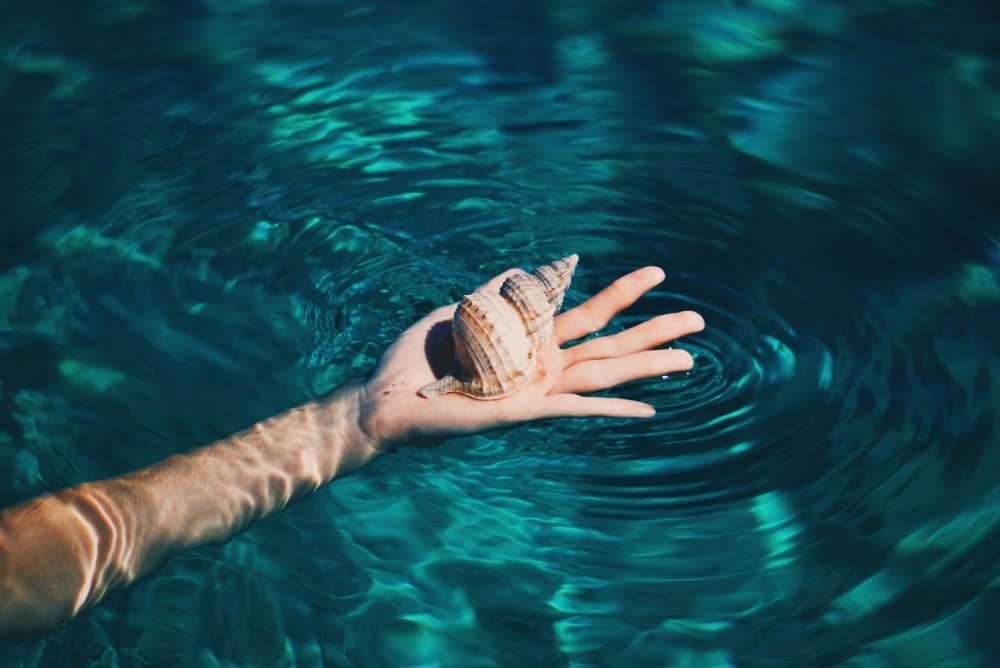


Ever wonder where all the microscopic bits of dirt, leaves, hair, bugs, twigs, enzymes, flocculant, and other solids go?
Some of it gets picked up by your filter. But the rest of it gets dissolved into your water over time.
That’s what Total Dissolved Solid measures: the amount of solid material that has dissolved into your water.
Once your TDS levels go above 1000 ppm, your pool chemistry gets affected. Early warning signs include chlorine demand, algae blooms, staining, and scaling.
As soon as your TDS level gets close to 1000 ppm, it’s important to take action to prevent extra work and keep your water healthy.
SOLUTION:
Measure your TDS level at least once a week, and keep it below 1000 ppm
When it’s too high, dilute your water to lower it. You don’t have to worry about low TDS levels, as that’ a good thing and means fewer solids are dissolved into your water.
8.) Adding chlorine or shock during the day



No matter when you add chlorine to your pool, it still does the job of sanitizing your water. But when you do it, specifically the time of day, has a major effect on how well that job is done.
Adding chlorine to your pool during the day isn’t the best strategy for one big reason: the sun burns up chlorine fast
While most chlorine is infused with stabilizer (CYA) to protect against sunlight, adding it to your water in the day guarantees that the sun will eat through most of it.
Which leaves your chlorine unstabilized, far less effective, and WAY easier to burn away.
Bottom line: The sun can “eat” more than half of chlorine you add during the day
Solution:
Add bulk chlorine at night, and make small adjustments during the day when necessary.
When you do this, you give your chlorine a chance to fully circulate through your water overnight before the sun comes out. This helps it last longer, and in turn, work more effectively.
9.) Adding pool shock directly into the pool skimmer
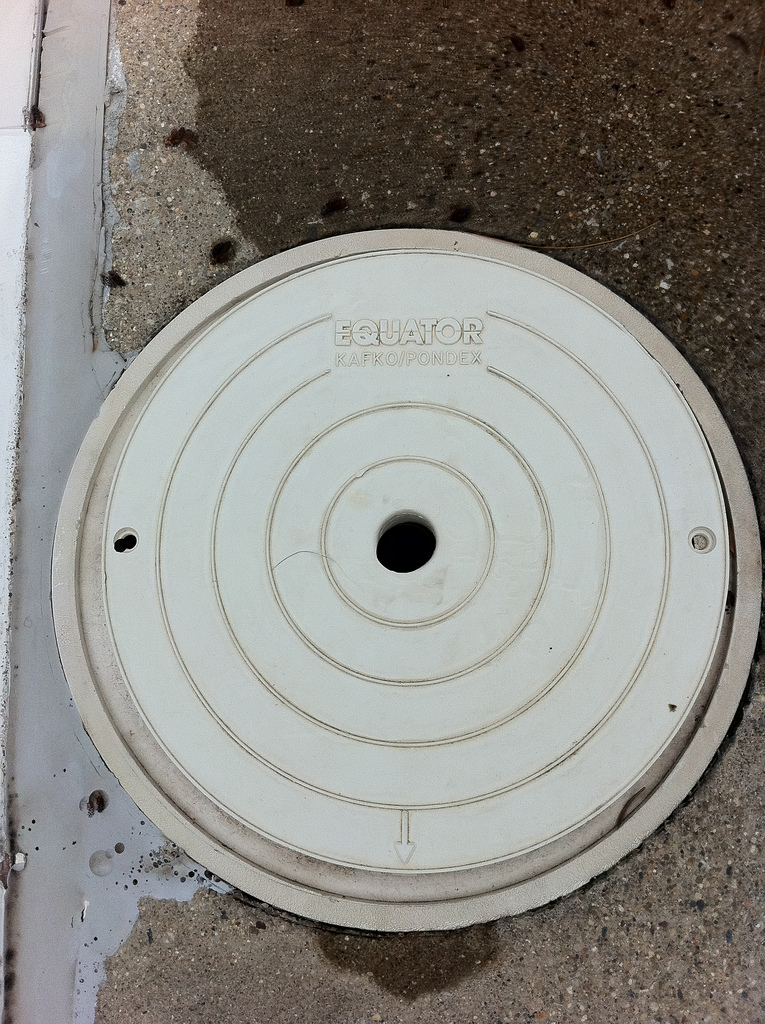


Doing this can cause an explosive chemical reaction in your pipes and automatic chlorinator. So if this is one of the pool maintenance mistakes you’re making, please stop now. For safety.
When a large amount of pool shock (powder) comes in contact with water, the combination produces gas and fumes. In an open container, this isn’t really a big issue.
But in a tight closed-in environment, like your pipes or salt water chlorinator, this reaction can create enough pressure to cause a small explosion. And at that point, you’ll have expensive damage to deal with.
Sure, it may be a little quicker, but it’s not worth risking your safety and pool equipment over.
SOLUTION:
Shock your pool using the bucket method described earlier. It’s safer, smarter, and more effective.
10.) Not using the DIY skimmer sock hack
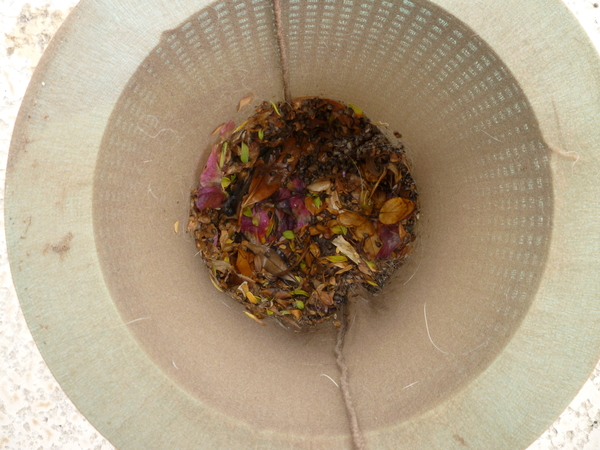


Do you know about the DIY skimmer sock hack? If you don’t, prepare to be amazed.
Normally, your skimmer collects all of the small debris floating on the surface of your water, like bugs, leaves, and twigs. But unfortunately, most of those contaminants break up and pass through the holes of the basket and into your filter.
While this is perfectly okay, and the reason why pool filters exist, there is a much better way to do things.
SOLUTION:
Make a DIY skimmer sock by wrapping pantyhose around the skimmer basket for finer filtration and easier cleanup.
This adds a protective netting around your skimmer basket, which more than doubles its filtration ability. Now, anything that would have slipped through the basket’s holes stays contained, thanks to the skimmer sock.
11.) Backwashing your filter too often
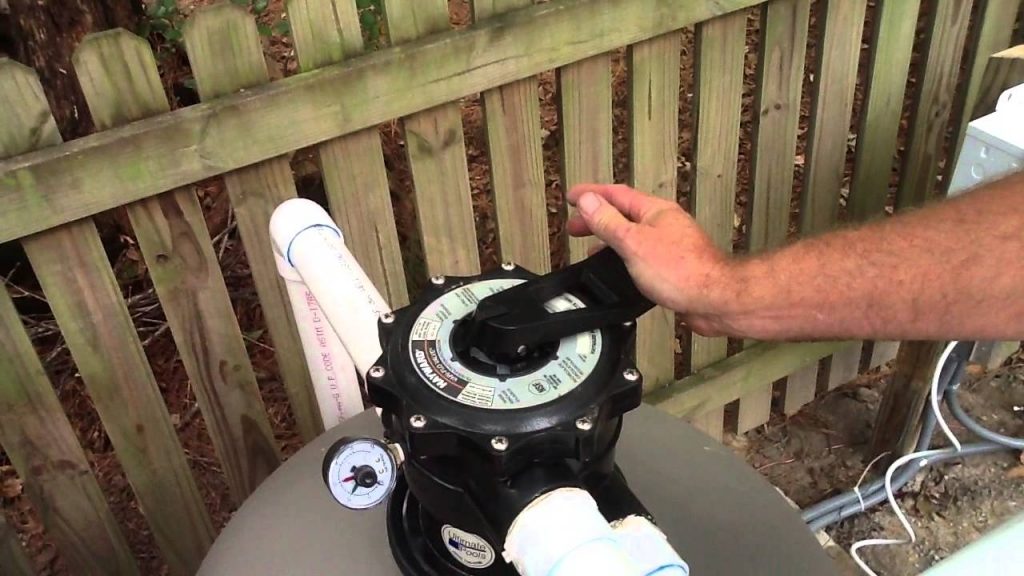


Yes, backwashing your filter is an important part of sand and DE pool filter maintenance. It loosens up buildup and expels the extra junk that collects in the sand and grids.
That said, you don’t need to do it as often as you would think. If you’re doing it more than twice in a month, it’s probably too much.
Over backwashing wastes water, and ironically causes sand filters to work less effective since SOME buildup is actually a good thing.
SOLUTION:
Only backwash your filter when the pressure gauge reaches at least 10 psi over your baseline/clean reading.
This reduces water waste and ensures that you backwash the filter only as much as necessary.
12.) Forgetting to adjust Alkalinity and pH
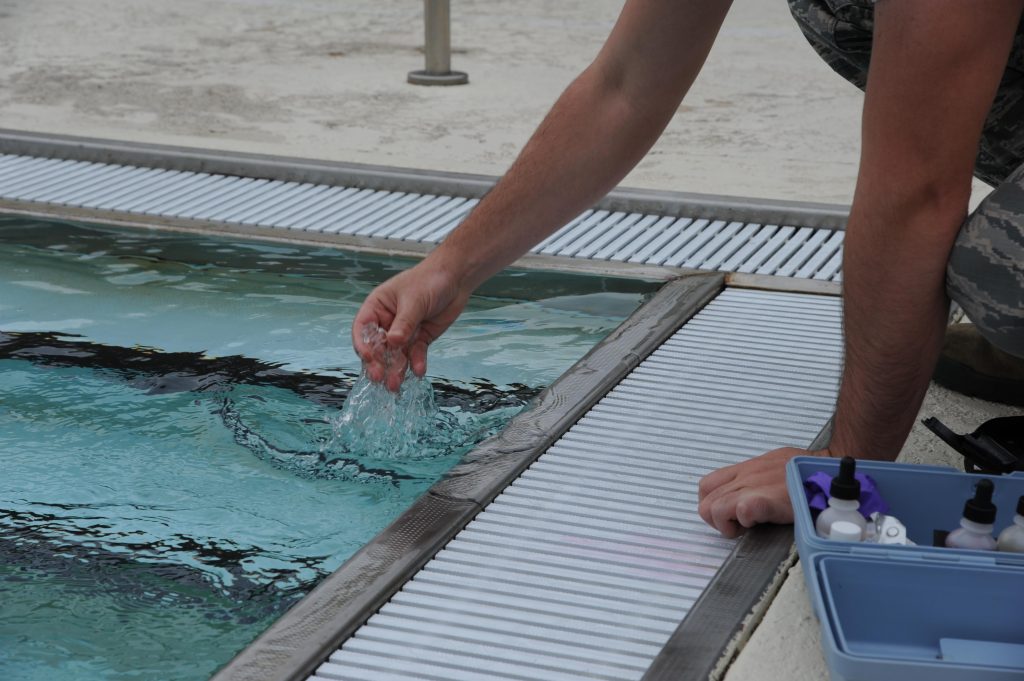


You know what’s more important than keeping your pool sanitized?
Making sure that your sanitizer can actually do its job.
Alkalinity acts as a stabilizer for pH, allowing it to stay balanced longer. And pH is what “stabilizes” your chlorine in a sense.
When pH levels are too high or low, chlorine doesn’t work well. And you end up needing much more of it, which soon becomes a waste.
So what can you do to stop wasting chemicals and get more out of your chlorine?
SOLUTION:
When balancing your water, adjust Alkalinity first for more stable pH. This saves you time and makes balancing other chemicals much easier.
Adjust your Total Alkalinity to a level between 80 – 120 ppm
Then adjust your pH t0 7.4 – 7.4.
13.) Adjusting alkalinity last
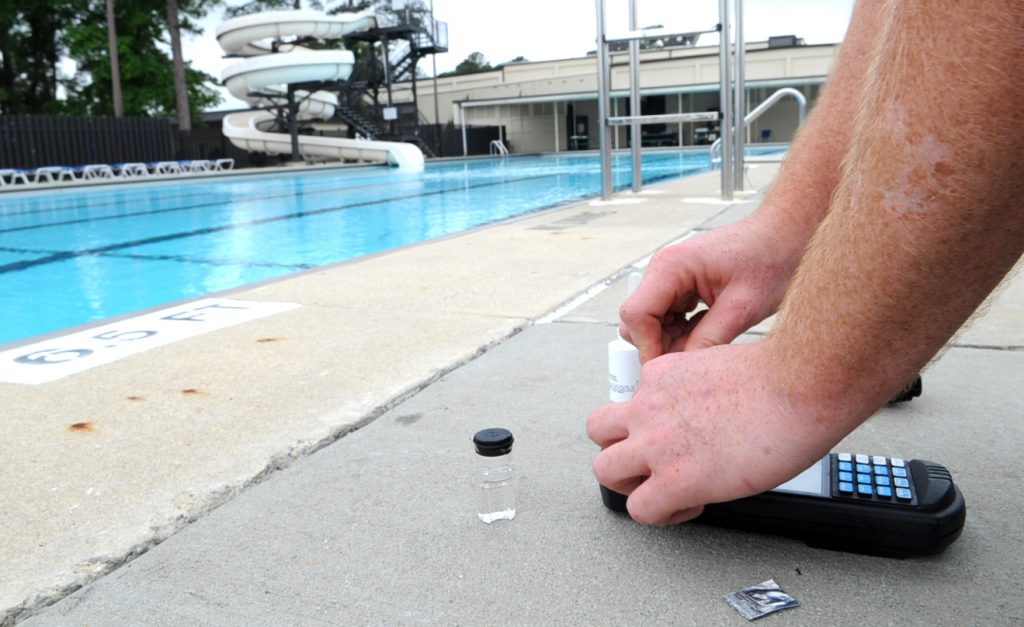


Building on the last point, your pool’s Total Alkalinity has a major effect on how easy or difficult it’ll be to adjust everything else.
Adjusting alkalinity last gives your pH the opportunity to increase or drop, and when that happens, chlorine stops working properly.
So if you decide to adjust alkalinity last, then you’re essentially playing a game of cat and mouse with your pH. Which makes getting a stable and proper pH level WAY more difficult.
SOLUTION:
Adjust your Total Alkalinity first, before anything else.
14.) Never sweeping the deck
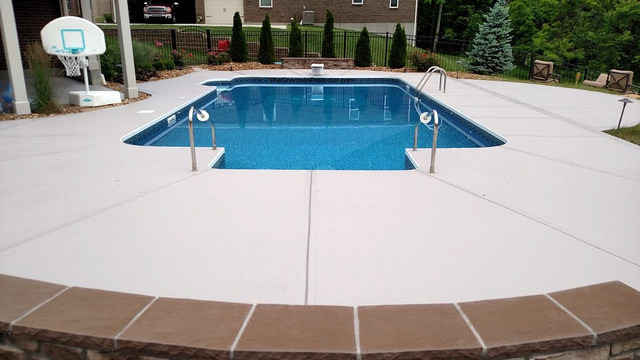


Yes, if you’re really good with all the other aspects of pool maintenance, then you can “get away” with not sweeping the deck. And depending on your pool set up, you may not even have to do it that much at all.
But here’s the thing: whether you realize it or not, a lot of the debris on your deck ends up blowing into your water. Light coats of dirt, sand, and broken up bits of leaves and weeds.
This means more contaminants, dirtier water, and higher chemical demand. Essentially, just a bunch of more work for you – all from not sweeping the deck.
SOLUTION:
To make things easy, consider the deck a part of your pool and sweep it once a week. Because everything sitting on it, from the tiny grains of sand and dirt to leaves and tiny wrappers, will find a way into your water if left uncleaned.
A clean pool deck makes for an even cleaner pool, remember that. It also means less pool maintenance, which is always a plus.
15.) Leaving the pool uncovered when it’s not being used
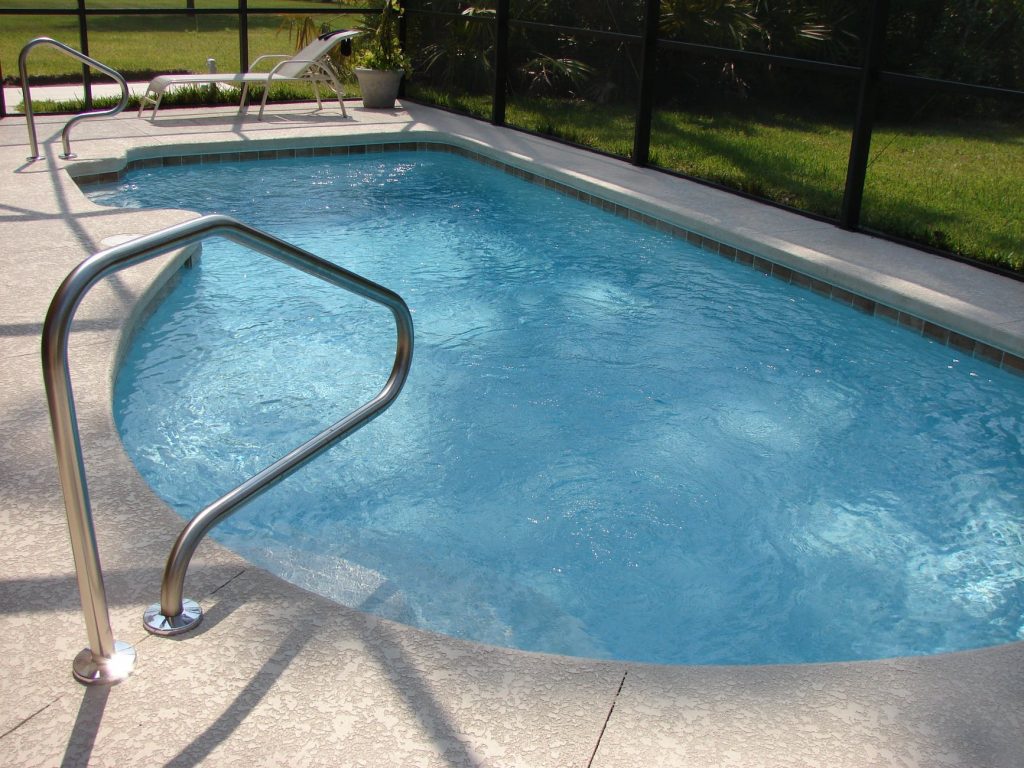


Leaving your pool uncovered isn’t necessarily a bad thing. It makes sense when you expect to swim, or just spend a lot of time in it.
And some pool owners do it for the aesthetic – an open pool does look pretty charming shimmering in the sun.
That said, there’s a very obvious drawback to doing this: it leaves your pool wide open to everything.
To elaborate, an uncovered pool takes in more contaminants and loses both water and heat faster. Neither of which is good if you’re trying to lower your swimming pool bills. It’s also very counterproductive if you’re trying to keep your pool warm during chillier weather.
SOLUTION:
Cover your pool at night, and whenever you’re not using it.
Keeping your pool covered is a lot like keeping a boiling pot of water covered. It keeps the heat locked in, drastically reduces evaporation, and prevents contaminants from getting in and dirtying the water.
So by covering your pool, you can:
- Avoid heat loss, improving heating efficiency
- Block contaminants from getting into the water
- Reduce water evaporation to keep your water use low and eco-friendly
Related: How To Choose The Best Swimming Pool Cover
16.) Not cleaning the filter often enough
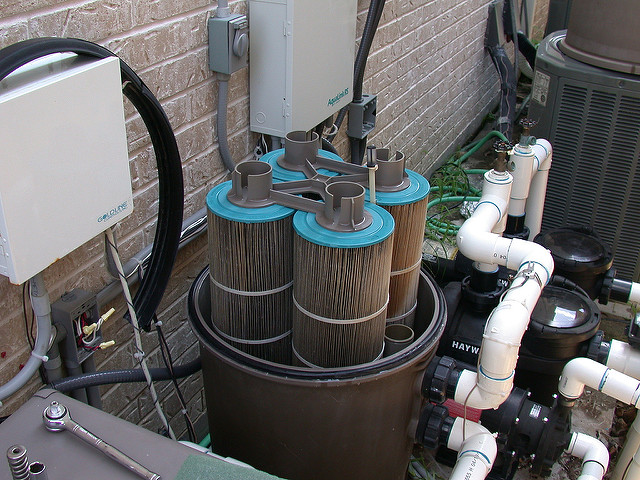


How many times can you backwash a filter before it’s time to clean and replace?
That’s a question a lot of pool owners ask, and with good reason. Sometimes it’s hard to tell.
But if you don’t do it enough, then you’ll deal with a dirtier pool and more wear on your equipment
Filter buildup causes PSI increase, less effective filtering, and puts a harder strain on the pump.
SOLUTION:
To know when to clean or replace your filter, look for these telltale signs:
- Abnormal PSI increases
- Contaminants flowing back into the water from the return jets
- Balancing your water becomes noticeably harder
- The filter cartridges stay dirty no matter how much you try to clean them
Most sand filters need the sand replaced every 3-6 months, depending on use.
Filter cartridges last a bit longer, with lifespans ranging from 6 to 24 months.
DE grids are the most durable, lasting 1-2 years, but need their powder replaced every few weeks.
Related: How To Choose The Best Pool Filter
17.) Smelling chlorine and thinking the pool has too much of it



Being able to smell the chlorine indicates the complete opposite of what you would think. It doesn’t mean your pool has too much – it means it needs more.
What you’re smelling are chloramines, which are contaminants that have already been oxidized.
So if the smell of chlorine is in the air, your water needs attention. Attention in the form of more chlorine.
SOLUTION:
If you can smell chlorine, test your chlorine level and add what’s needed to get between 3 and 5 ppm.
18.) Not servicing your pool heater or pump
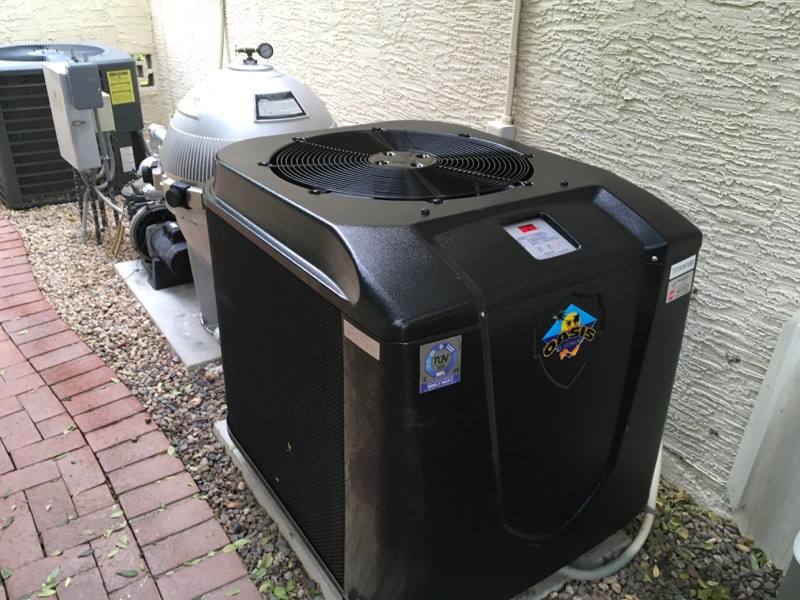


Your pool heater is what keeps your water swimmable year round. It warms it up during the fall when the chilly temperatures roll in and keeps it comfortable for night swims in the summer.
But if your heater stops working, it’s ice cold swims year round. No more on-demand heat.
And your pump, well your pump powers the entire system. Including your pool heater. So if your pump breaks down, your entire pool is pretty much “out of order”.
Since your pump and pool heater are some of the most heavily used pool equipment you have, they experience wear and tear at a faster rate.
And while they’re built to perform, they’re also most likely to need unexpected repairs, or even break down when left unserviced for too long. But if they don’t break down immediately, the added wear and tear still causes efficiency to drop, which ends up costing you more and more each month.
SOLUTION:
Service your pool equipment yearly for lower energy bills and better performance
It’s a lot more affordable to service your pool heater and pump once a year, then it is to replace them every 5.
Plus, when you keep your pool equipment serviced, it runs at peak performance, offering the best energy efficiency. This helps keep your energy bills consistently low, which is another plus.
Related: 7 Ways Pool Heater Maintenance Saves You Money
19.) Forgetting to add winterizing chemicals when you close your pool
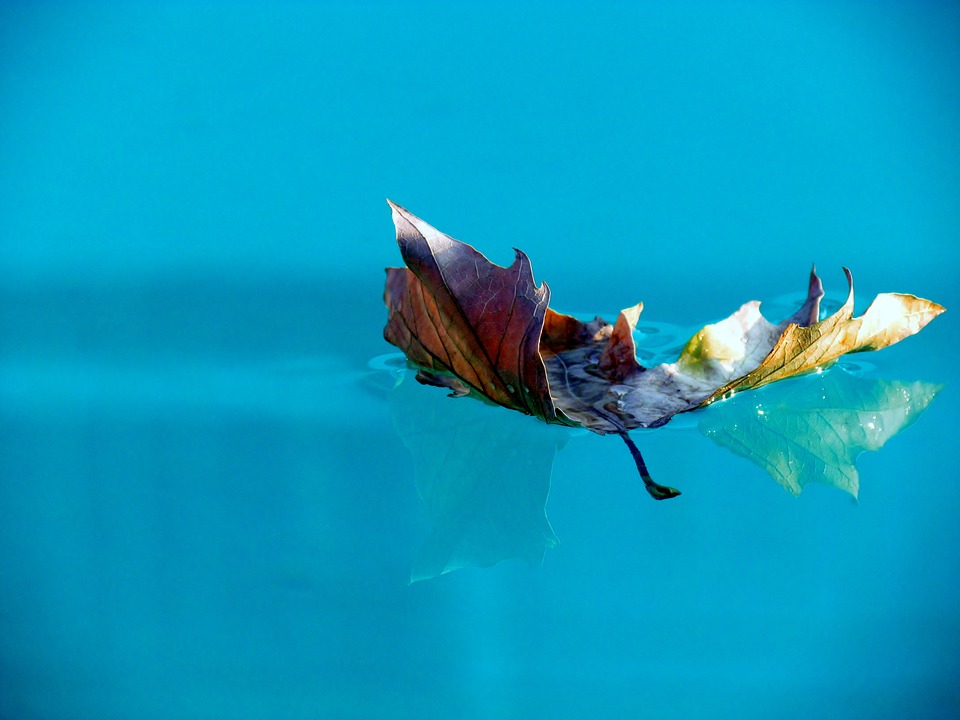


When it comes time to close your pool for the season, adding the right chemicals can make a huge difference when reopening in March.
Balancing your water before closing is an obvious must. But if you want the clearest and cleanest possible water, there are a few other things to do.
While your pool is closed, there’s plenty of time for algae spores to cluster up and take over your water. At the same time, metal staining can start forming if you aren’t using a metal sequestrant
Solution:
Add these winterizing chemicals when you close your pool for a clean and healthy reopening in Spring:
- Add algaecide to control and prevent pool algae
- Add metal sequestrant to control metal buildup and prevent staining
- Add enzyme to prevent organic staining and water line scum
20.) Vacuuming incorrectly, or not at all
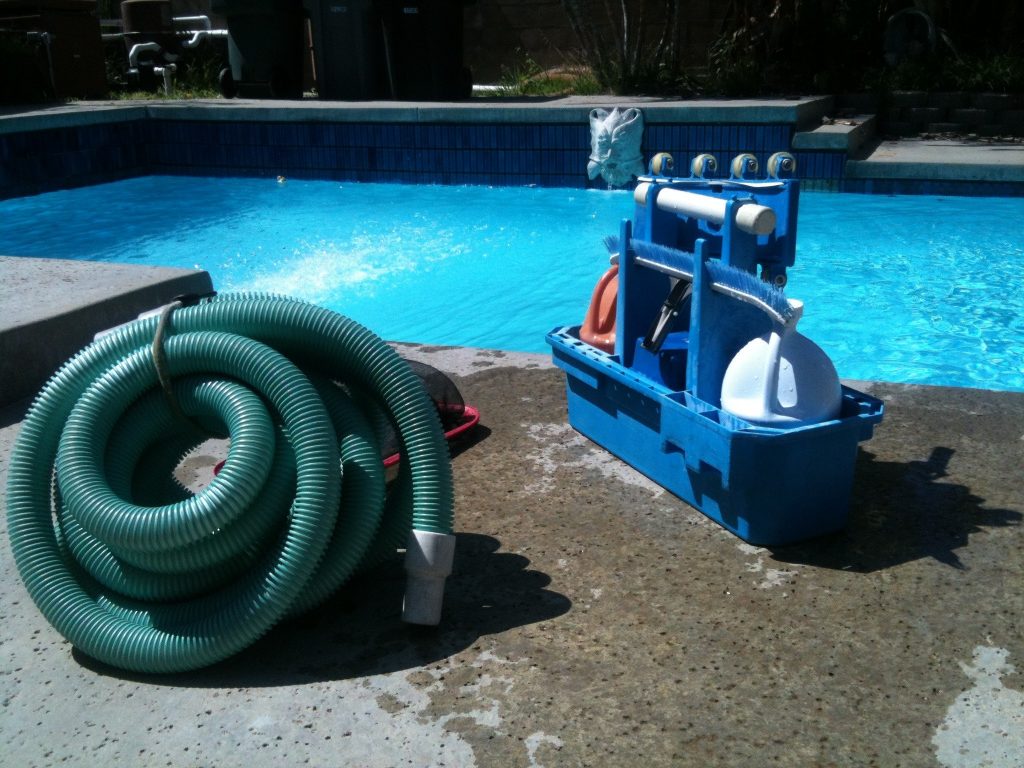


Vacuuming your pool makes sense for the same reason vacuuming your living room carpet makes sense.
It removes contaminants and keeps a space that you spend a lot of time in clean and healthy.
A lot of pool owners know this but still find themselves skipping a week or two of vacuuming.
But all that leads to is more manual cleaning later, more chemical demand, more time and money.
And if you’re one of the pool owners who only vacuums the “dirty” part of their pool floor, you may want to consider a different approach.
While this may seem more efficient for on the go cleaning, all it does is spread the contaminants you can’t see and help them build up more. And all that does is eat away at your chemicals and dirty your water.
SOLUTION:
Vacuum at least once a week to stop wasting chemicals and time.
We recommend making a pool care schedule and doing your vacuuming on the weekend. That way you start with a fresh clean pool each week.
When vacuuming, use the same strategy you’d use when mowing your grass. Long straight lines, up and down the width of the pool. this ensures that you get everything, and makes the next vacuuming much faster.
21.) Neglecting chemical maintenance when you run out of chemicals
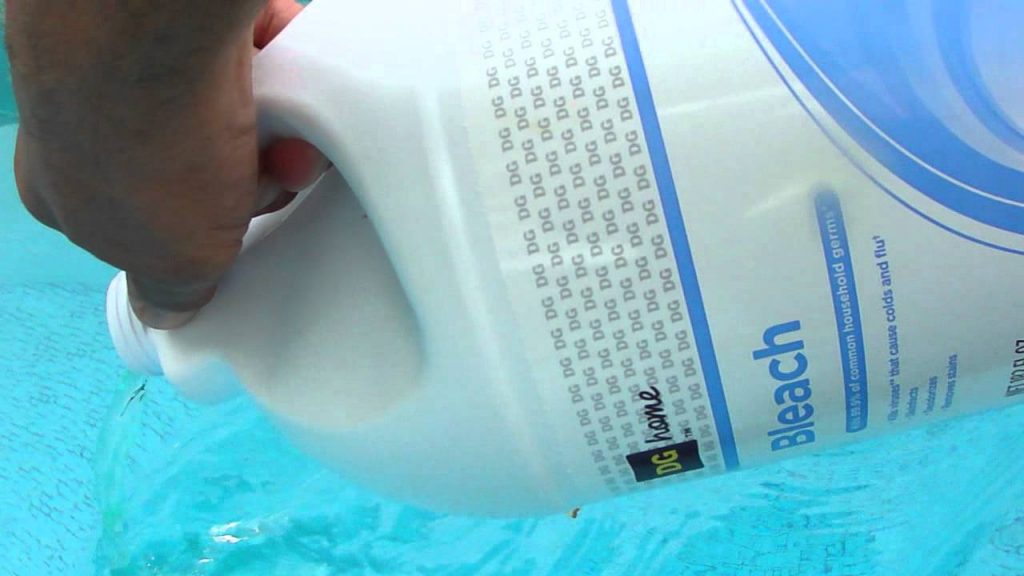


We get it. Sometimes you run out of certain pool chemicals and just can’t find the time to get to the pool store.
This happens to a lot of pool owners, and it usually goes one of two ways:
- They work with what they have left and hope for the best
- They improvise and use alternative chemicals to balance their water
If you choose the former, then the end result is usually dirtier, and even more out of balance water.
But improvising with alternative chemicals, most of which you have lying around your house, can help you keep your water balanced.
SOLUTION:
Use these common household products to balance and clean your water:
- Bleach (chlorine alternative): increases your chlorine level by up to 2 ppm
- Baking soda: 1 pound increases pH by .2, and Alkalinity by 7 ppm (in a 10,000 gallon pool)
- Vitamin C: for metal and organic stain removal
Related: 12 DIY Pool Cleaning & Maintenance Tips
Bonus.) Not taking advantage of pool automation to save energy and reduce your workload
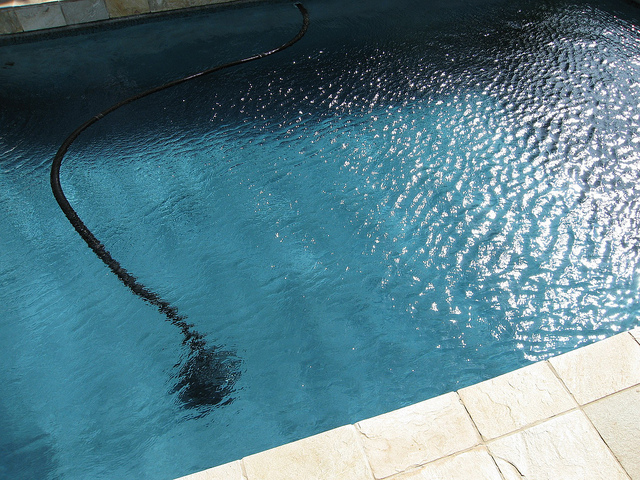


There’s a reason why we put this one last. And it’s because we wanted to instill the values of good old-fashioned pool maintenance before we showed you the “easy” route.
Here’s the thing. A lot of the pool maintenance you do on a weekly basis could just as easily be done by a robot or machine.
So instead of spending time doing it yourself, you could be saving that time for more important things.
Plus, how many times have you forgotten to run the filter, or turn on the pool heater? Remember how cold and murky the pool was?
Wouldn’t it be great to avoid that forever?
SOLUTION:
Pool automation is the solution to a lot of the tedious work that comes with owning a pool.
With pool automation you can:
- Automatically run your pump on a schedule, or whenever it gets cold
- Power your pool heater on and off automatically.
- Automatically sanitize your pool and monitor chlorine with a salt water generator
- Remotely measure pool chemicals with Phin
If you forget to run your pump and heater on a schedule, then your pool suffers, and you spend more energy to get everything back in order.
So use automation to make it easier. You can learn more about it here: 11 Simple Ways To Automate Pool Maintenance

